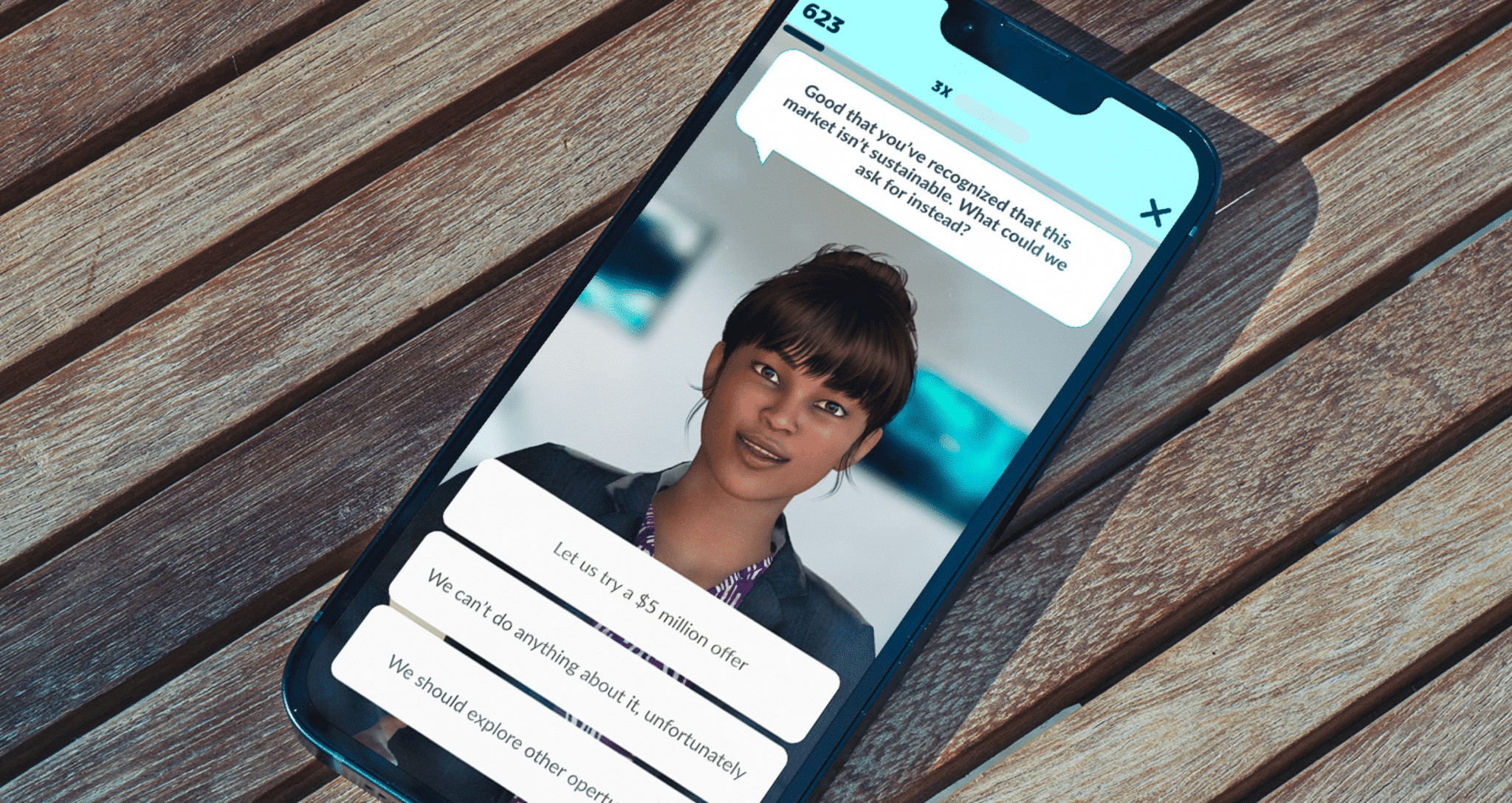Fundamentally, if you can foster a sense of happiness and achievement from doing something that might otherwise be considered difficult or tiring then you’ve hit a winning formula.
It’s here where gamification is uniquely positioned to help.
Engaging dialogues, immersive 3D graphics, memorable storytelling, captivating presentation, competitive leaderboards. These are just some of the hallmarks of quality gamified training.
But if you’re wondering how to make the most of gamification’s many benefits in your workplace training, I have some tips for you. Keep these 3 fundamentals front of mind to ensure your gamified training hits the mark.
1. Focus on the behavior you want to change
Before you begin building out your gamified training, ask yourself one important question:
“What behavior would I like to see done differently here?“
This might seem a little obvious at first glance. But it will help ensure you to pick a relevant training goal that adds value to your organization and your people.
Failing to identify and define your desired outcome from the beginning of your design process will likely lead to unfocussed or misguided training. With an ill-defined objective it’s all too easy to get side-tracked with a well-meaning but overly ambitious curriculum. One that won’t make the kind of impact on your KPIs that you need.
For example – let’s say your ambition is to onboard new starters and get them up to speed with your IT systems. Gamification is ideal for this kind of process training that requires a lot of repeated interaction to make new knowledge stick. But as tempting as it may be to also include sections on say company values, keep your eyes on the IT systems competency prize.
Take the time to consult with your key internal stakeholders and collectively decide on the behavioral needle that you want to move. Keep a laser focus on the one or two key objectives of your training, and don’t allow for the dreaded ‘feature creep’ of adding too much of anything else.
Your future self will thank you for it when you come to evaluate the program’s results in a few months’ time.
2. Repeat and vary your gamification tactics
Does that sound like an oxymoron on first reading? Here’s why repetition and variety are key partners when it comes to effective training.
We know from numerous studies that repetition is one of the most important factors in getting knowledge to stick. Regardless of how interesting it feels in the moment, if we train something only once, we human beings can forget as much as 80% of what we’ve learned after just one month.*
But realistically, it is often hard to get learners to repeat workplace training. Particularly if the subject matter alone is perhaps not the most compelling.
To keep your users engaged and on their toes, mix up their training with a variety of challenges that require a blend of thinking, trivia, and quick physical reactions. The most advanced gamified training solutions available today will offer a range of options to keep your training fresh and compelling.
Here’s a working example. This free-to-play solution teaches how to use a tool that many of us have had to become more familiar with over the last year – Microsoft Teams. This gamified simulation uses interactive dialogues with characters along with a range of different challenges that guide new and existing Teams users through the platform’s many features.
All good fun and nice to look at. But more importantly, does it work? From surveys carried out after training, 95% of users said they had become better in virtual team meetings after playing through the simulation.
Mission accomplished.
3. Trust your users to learn through failure
We’ve already touched on some of the ways that gamified training encourages your users to repeat and complete their courses. But even with these advantages, your gamified training can be undermined completely by not setting an appropriate level of challenge.
It might feel more intuitive to make your gamified training as easy and accessible as possible. If your users can complete it easily then they will learn more quickly, right?
Unfortunately, it’s not that simple.
Instantly winning is not fun for us humans. Keeping your users engaged with relevant content is the name of the game with any training program. And the quickest way of losing that hard-eared engagement is to make your training too easy.
Strike the right balance by introducing your users to their gamified training with a few initial simple challenges to help them get to grips with the mechanics. Then try adding what in game design is called a ‘difficultly spike’ – a deliberately challenging task that they will most likely fail the first time.
Provided you offer accessible feedback and tips on how they might improve, this should compel your users to try again to ace the module next time around. Your gamification tools should allow you to test difficulty in control groups and monitor the results to make sure you get this balance right.
Overcoming a little bit of struggle makes our wins feel meaningful and memorable. Trust in your trainees to feel this and don’t be afraid to teach through failure.
Setting yourself up for gamification success
Creating a learning-by-doing environment through gamification will give your people a safe space to practice and learn. And through the artful use of sounds, special effects, and interactive storylines, you can help your people relate to others in-game with lifelike characters.
Be sure to set realistic behavioral change goals upfront to make your training focused. Add enough variety to keep your users engaged. And use testing and player feedback to make sure you have the challenge level set correctly to keep them motivated.
Remember, as with most things in life, growth almost always happens outside of our comfort zone. When done correctly, gamification is an ideal method to safely push your people just far enough outside of theirs.





